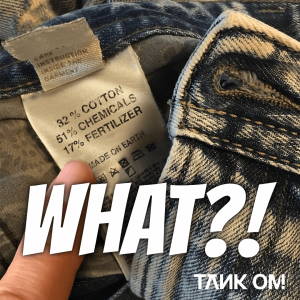
Yes, we’re nagging about textiles – that’s our purpose. Our vision is to spread knowledge about textiles and their impact on the environment.
We hear a lot about aviation and its environmental consequences; of course, we would like to fly less. …
by asas
by asas

Water and chemicals are two essential ingredients for making cotton. Did you know that the Swedish clothing sector consumes as much water as the municipal waterworks produce annually? [1] [2]
by asas

No, of course not. But… to grow a kilo of cotton requires 1 to 1.5 kilos of chemicals and a pair of cotton pants weighs between 0.5 to 0.8 kilos [1], so…
For over an hour, these chemicals work …
by admin

This week, we invite you to Stella and Sebbe in their thoughts on fabrics, how they make them, and how this affects animals, nature and people. Is it true that textiles and clothing affect the environment, and if so, in …
by asas

Here in the West, we don’t necessarily have to associate these words with each other. But water and toxins are unfortunately linked in other parts of the world. In Brazil, the world’s fourth most prominent user of agrochemicals, researchers have …
by asas

Yes, the fact is that most of your clothes contain “plastic”. Look at the label and what it says: polyester, nylon, lycra, elastane, and acrylic. These are common materials in our clothes and are usually called synthetic fibres. Synthetic fibres …